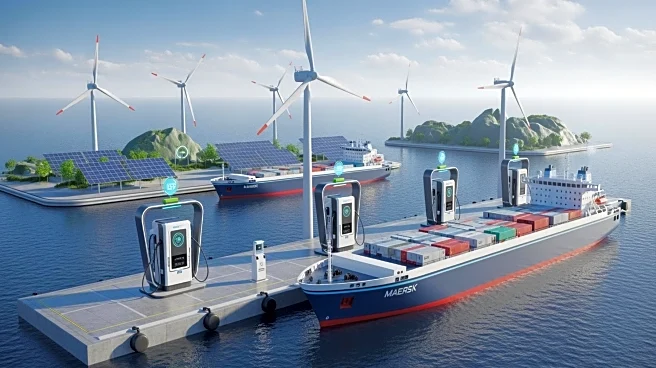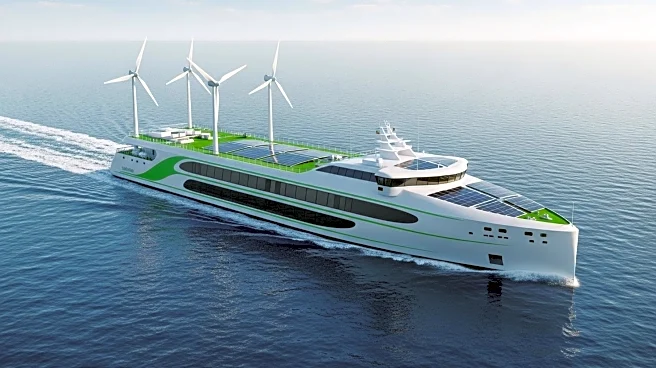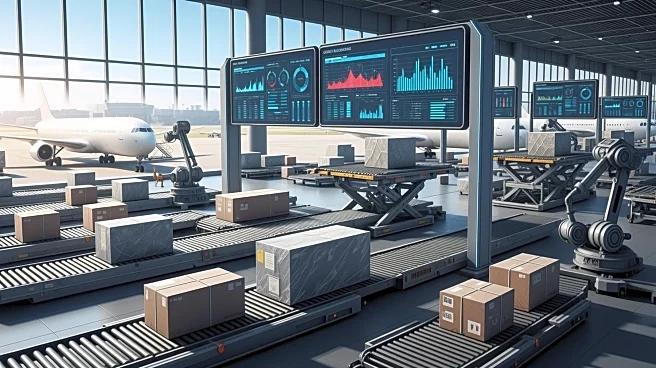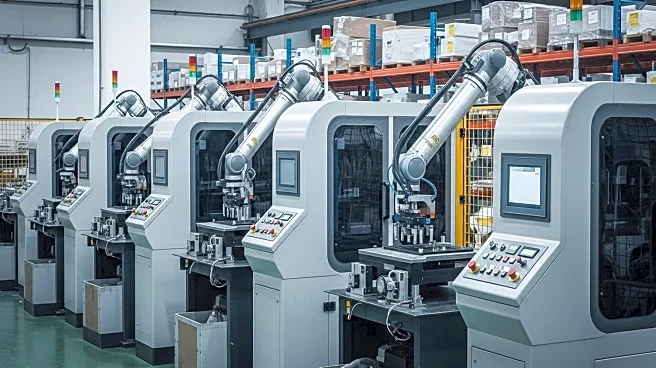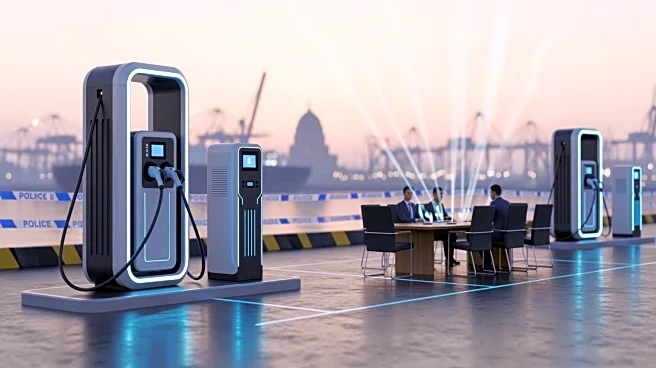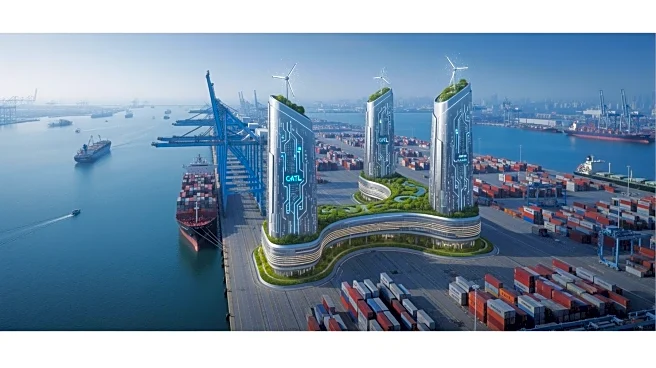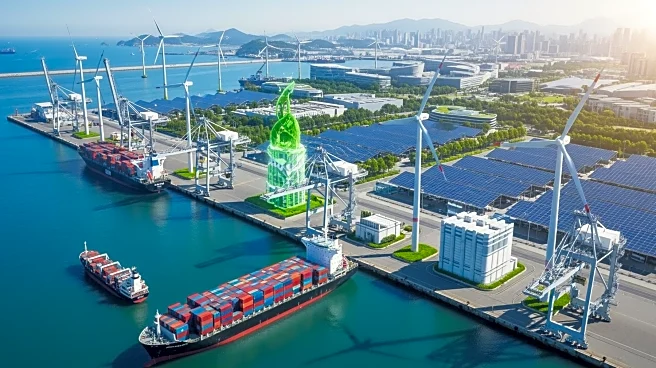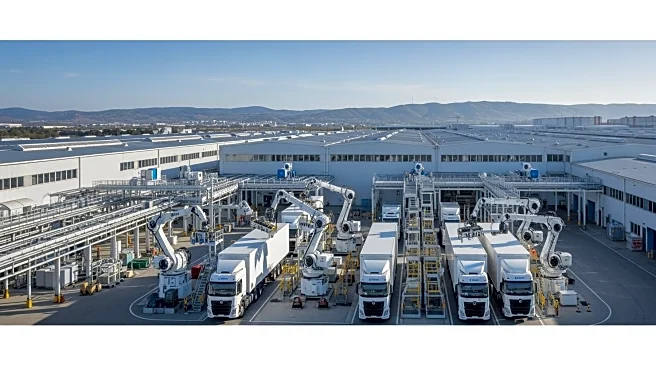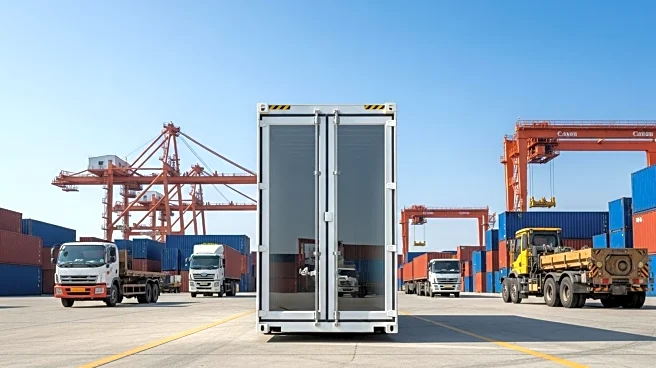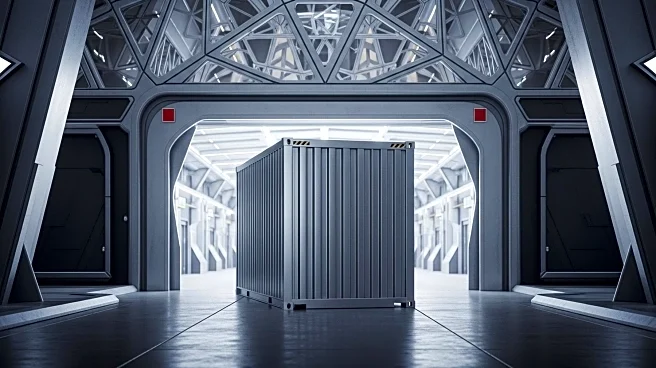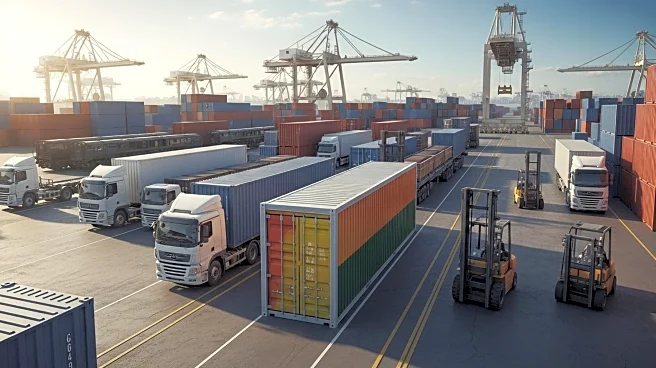What's Happening?
Maersk, a leading container shipping line, and CATL, the world's largest battery maker, have announced a strategic partnership aimed at decarbonizing logistics, port operations, and supply chains. This collaboration involves electrifying port equipment
and deploying advanced battery systems to transform ports into energy nodes. The partnership seeks to reduce emissions in shipping, a sector traditionally reliant on bunker fuel, by integrating large battery systems at ports to absorb and release electricity during varying demand periods. This initiative follows a previous agreement between CATL and Maersk's terminal subsidiary, APM Terminals, to electrify port equipment. The partnership aims to create standardized battery systems that can be replicated across multiple terminals worldwide, enhancing the efficiency and sustainability of maritime operations.
Why It's Important?
The partnership between Maersk and CATL is significant as it addresses the urgent need to reduce emissions in the shipping industry, which has lagged behind other sectors in adopting cleaner energy solutions. By transforming ports into energy hubs, the collaboration could lead to substantial reductions in carbon emissions and improve air quality in port cities. The integration of battery systems not only supports the electrification of port equipment but also provides a template for large-scale electrification, potentially influencing global trade practices. This move positions Maersk as an energy integrator and CATL as a key player in maritime decarbonization, showcasing the potential for ports to become central to clean energy systems.
What's Next?
The partnership is expected to focus initially on ports with access to renewable electricity, particularly in Northern Europe, where wind-heavy grids are prevalent. As the model solidifies, it could expand to Asia and North America, and potentially extend inland to logistics hubs and warehouses. The success of early deployments will likely reduce perceived risks, encouraging broader adoption of electrification in maritime operations. This collaboration could also lead to innovations in battery recycling and second-use applications, further enhancing the sustainability of the shipping industry.
Beyond the Headlines
The Maersk-CATL partnership highlights the potential for ports to become self-sustaining energy hubs, reducing dependency on new imports and fostering circularity in battery use. This approach could lower the total cost of ownership and create a predictable supply of recovered materials, contributing to long-term industrial competitiveness. The integration of battery systems across scales—from forklifts to grid-connected systems—demonstrates a holistic approach to energy management, potentially setting a precedent for other sectors seeking to decarbonize.
